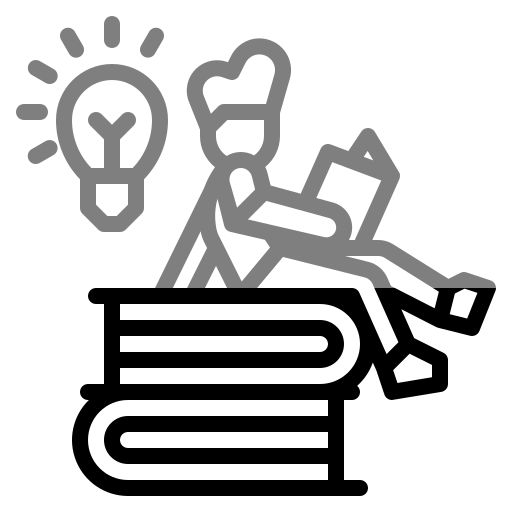The originality of machinesAI takes the Torrance Test
Erik E. Guzik, Christian Byrge, Christian Gilde
Publikationsdatum:
|
 |
 Diese Seite wurde seit 2 Jahren inhaltlich nicht mehr aktualisiert.
Unter Umständen ist sie nicht mehr aktuell.
Diese Seite wurde seit 2 Jahren inhaltlich nicht mehr aktualisiert.
Unter Umständen ist sie nicht mehr aktuell.
 Zusammenfassungen
Zusammenfassungen
 GPT-4 erreicht in einem weit verbreiteten Kreativitätstest (TTCT) Resultate, die dem obersten Prozent von menschlichen Proband:innen entspricht.
GPT-4 erreicht in einem weit verbreiteten Kreativitätstest (TTCT) Resultate, die dem obersten Prozent von menschlichen Proband:innen entspricht.This research seems to be the first to show that AI matches or exceeds
human abilities for original thinking. Based on the research, not only are
the latest forms of AI generating large numbers of ideas (fluency) and
different types, variations, and categories of ideas (flexibility), they are,
for the first time, generating new, unique, and unexpected ideas (originality),
performing in the top percentile for original thinking. In short,
AI models like GPT-4 are becoming capable of producing ideas that
humans consider to be original, novel, and unique.
Von Erik E. Guzik, Christian Byrge, Christian Gilde im Text The originality of machines (2023) This exploratory research investigated the creative abilities of OpenAI’s large language model, ChatGPT, based
on the GPT-4 architecture, as assessed by the Torrance Tests of Creative Thinking. In comparison to human
samples and a national percentile from Scholastic Testing Services, ChatGPT’s performance was analyzed for
fluency, flexibility, and originality. Results indicated that ChatGPT scored within the top 1% for originality and
fluency, and showed high scores for flexibility, thus highlighting the current creative abilities of AI and the
potential of AI systems to support and augment human creativity in new and meaningful ways. The study encourages
additional research to further define, measure, and develop creativity in the era of advanced AI.
Von Erik E. Guzik, Christian Byrge, Christian Gilde im Text The originality of machines (2023)  Bemerkungen
Bemerkungen
While the results obtained from this study highlight several interesting
areas of discussion, three points seem of particular relevance: (1)
the unexpected originality of the most recent iterations of AI; (2) the
lower relative flexibility scores of AI on certain individual tasks and
activities; (3) the possible limits of current creativity assessments and/or
conceptions of creativity.
Von Erik E. Guzik, Christian Byrge, Christian Gilde im Text The originality of machines (2023) Is, then, AI creative? From the perspective of generating novel and
unexpected output—and based on currently accepted conceptions and
assessment methods of creativity—this study must conclude that, yes, it
is. The impact of this fact will likely shape not only the practical applications
of AI’s simulated creativity in business and overall human life,
but how we understand the unique operation of human creativity as
well.
Von Erik E. Guzik, Christian Byrge, Christian Gilde im Text The originality of machines (2023) Finally, the results from this study may demonstrate a need to
reevaluate and/or expand current conceptions of creativity, especially
as related to the notions of effectiveness, usefulness and value. That is,
while GPT-4 generated surprisingly high marks for fluency, flexibility,
and originality, AI may not yet be able to discern the effectiveness of its
proposed original ideas, perhaps suggesting a limitation of current AIbased
creativity as based on usefulness or effective solution-finding,
an important area for future research and study.
Von Erik E. Guzik, Christian Byrge, Christian Gilde im Text The originality of machines (2023)  Dieser wissenschaftliche Zeitschriftenartikel erwähnt ...
Dieser wissenschaftliche Zeitschriftenartikel erwähnt ...
 Personen KB IB clear | OpenAI , Robert J. Sternberg | ||||||||||||||||||
 Aussagen KB IB clear | Generative Machine-Learning-Systeme bestehen immer mehr Abschlussprüfungen
Learning Management-Systeme schränken Kreativität ein | ||||||||||||||||||
 Begriffe KB IB clear |  Chat-GPT
, Chat-GPT
,  Generative Machine-Learning-Systeme (GMLS) Generative Machine-Learning-Systeme (GMLS) computer-generated text
, computer-generated text
,  Generative Pretrained Transformer 3 (GPT-3)
, Generative Pretrained Transformer 3 (GPT-3)
,  Generative Pretrained Transformer 4 (GPT-4)
, Generative Pretrained Transformer 4 (GPT-4)
,  Kreativität Kreativität creativity
, Torrance Test of Creative Testing (TTCT) creativity
, Torrance Test of Creative Testing (TTCT)
| ||||||||||||||||||
 Bücher |
| ||||||||||||||||||
 Texte |
|
 Dieser wissenschaftliche Zeitschriftenartikel erwähnt vermutlich nicht ...
Dieser wissenschaftliche Zeitschriftenartikel erwähnt vermutlich nicht ... 
 Nicht erwähnte Begriffe | GMLS & Bildung, GMLS & Schule, Künstliche Intelligenz (KI / AI) |
 Tagcloud
Tagcloud
 Zitationsgraph
Zitationsgraph
 Zitationsgraph (Beta-Test mit vis.js)
Zitationsgraph (Beta-Test mit vis.js)
 Anderswo finden
Anderswo finden
 Volltext dieses Dokuments
Volltext dieses Dokuments
 |  The originality of machines: Artikel als Volltext ( The originality of machines: Artikel als Volltext ( : :  , 1587 kByte; , 1587 kByte;  : :  ) ) |
 |  The originality of machines: Artikel als Volltext ( The originality of machines: Artikel als Volltext ( : :  , 1587 kByte; , 1587 kByte;  : :  ) ) |
 |  The originality of machines: Artikel als Volltext ( The originality of machines: Artikel als Volltext ( : :  , 1587 kByte; , 1587 kByte;  : :  ) ) |
 Anderswo suchen
Anderswo suchen 
 Beat und dieser wissenschaftliche Zeitschriftenartikel
Beat und dieser wissenschaftliche Zeitschriftenartikel
 Beat hat Dieser wissenschaftliche Zeitschriftenartikel während seiner Zeit am Institut für Medien und Schule (IMS) ins Biblionetz aufgenommen. Er hat Dieser wissenschaftliche Zeitschriftenartikel einmalig erfasst und bisher nicht mehr bearbeitet. Beat besitzt kein physisches, aber ein digitales Exemplar. Eine digitale Version ist auf dem Internet verfügbar (s.o.). Es gibt bisher nur wenige Objekte im Biblionetz, die dieses Werk zitieren. Beat selbst sagt, er habe dieses Dokument gelesen.
Beat hat Dieser wissenschaftliche Zeitschriftenartikel während seiner Zeit am Institut für Medien und Schule (IMS) ins Biblionetz aufgenommen. Er hat Dieser wissenschaftliche Zeitschriftenartikel einmalig erfasst und bisher nicht mehr bearbeitet. Beat besitzt kein physisches, aber ein digitales Exemplar. Eine digitale Version ist auf dem Internet verfügbar (s.o.). Es gibt bisher nur wenige Objekte im Biblionetz, die dieses Werk zitieren. Beat selbst sagt, er habe dieses Dokument gelesen.








 Biblionetz-History
Biblionetz-History